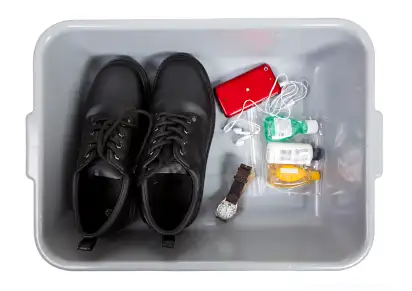
So National Opt-Out Day was a resounding dud, by many accounts. Few people opted out of the scanners, and airports were unusually quiet.
Of course, the general consensus from travelers is that most scanners were shut down and roped off, meaning people had nothing to opt out from. The TSA’s official stance on this is that there was no coordinated effort to minimize opt-outs, and maybe that’s true. But the fact is that only about 1 to 3 percent of travelers would have been selected in the first place (per the TSA), which is such a small number to begin with that even an enthusiastic protest would have had little effect. Shut down a few scanners and the problem all but vanishes. You be the judge.
Either way, it doesn’t really matter. The story here was never National Opt-Out Day itself, but rather years of frustration with intrusive and increasingly invasive TSA policies boiling over. There’s no denying National Opt-Out Day played a crucial role in bringing the issue to the public: the past few weeks saw multiple Congressional hearings, countless newspaper columns and op-eds, and everyone from Anderson Cooper to Matt Lauer weighing in and interviewing TSA officials. The goal was not, ostensibly, to grind air travel to a halt. The goal was discourse. In that sense, it’s hard to call National Opt-Out Day a failure.
But for all the hype, noise, and honest debate sparked by the backlash against body scanners and pat downs, those policies emerged from the holiday intact. The TSA weathered the criticism, dealt with the planned protest, and now it’s back to business as usual.
Anyone surprised or disappointed shouldn’t be. The TSA was never going to capitulate over a few opt-outs—far too many resources have been invested in these policies, and to renege would be to sacrifice whatever credibility or authority the TSA still possesses. Instead, the goal was to make TSA policy a national discussion, and opponents of the policies have succeeded.
Further, the public debate may have influenced public opinion. A Zogby poll, taken between November 17 and 22 (roughly the peak of TSA backlash) found a majority of travelers reject the new screening procedures, and 48 percent said they’d consider alternative travel methods specifically to avoid the TSA’s screening policies. Hopefully polling outfits continue asking, even as the national media moves on to the next drama du jour.
So what’s next? That depends. For starters, the TSA is working on body scanner software that could potentially mute passengers’ privacy concerns. The software translates the scan into a stick figure, and uses a red box to identify potential hidden items. No naked images. TSA chief John Pistole seemed eager to deploy the software when he appeared before a Senate subcommittee earlier this month—he described the current state of affairs as an “interim period,” suggesting this software is a long-term solution—but admitted the software is turning up too many false positives to be useful just yet.
In the meantime, scanners continue rolling out. The TSA’s favorite line over the past few weeks is that “very few people will get the scanner or pat down, so it’s not a big deal.” Well, that’s true. Today. But what about a year from now? Two years?
This is why the conversation we’re having now matters, and why, hopefully, it will continue.
We hand-pick everything we recommend and select items through testing and reviews. Some products are sent to us free of charge with no incentive to offer a favorable review. We offer our unbiased opinions and do not accept compensation to review products. All items are in stock and prices are accurate at the time of publication. If you buy something through our links, we may earn a commission.
Related
Top Fares From
Today's Top Travel Deals
Brought to you by ShermansTravel
Shop and Save with Country Inns...
Patricia Magaña
 Hotel & Lodging Deals
Hotel & Lodging Deals
$229 -- Chicago: Discounted Rates and...
Francesca Miele
 Hotel & Lodging Deals
$229+
Hotel & Lodging Deals
$229+
$188 -- Honolulu: Save on Oceanview...
Abigail Lamay
 Hotel & Lodging Deals
$188+
Hotel & Lodging Deals
$188+



